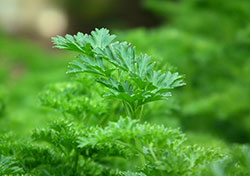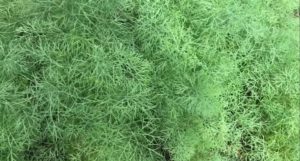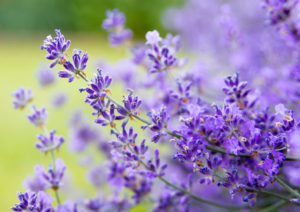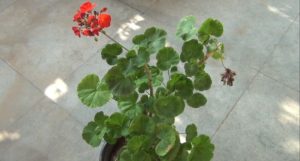If you’re looking for something to grow from the supermarket produce section, then let me tell you how to grow parsley.
You read that right, this is another herb from the grocery that you can regrow at home for your very own supply. Fresh and free, that’s the future!
This is one of the things I really love about gardening—how sustainable living is no longer just a concept, it’s a lifestyle you can actually lead.
So, when you’re just starting to grow your own garden, planting herbs is a perfect starting point for you.
They’re cheap to plant and easy to grow. Most importantly, they’re very rewarding!
First, let’s talk about parsley. This is a versatile herb that earned its right to be a kitchen staple. Be it fresh or dried, there are many recipes that need a little bit of parsley. Its complex taste can elevate any sauce and it’s a wonderful addition to your basic salad.
I use some of my fresh parsley as a garnish for all kinds of pasta dishes and it adds that subtle kick that I really love.
Alternatively, you can always squeeze a fresh lemon juice or lime to balance out parsley’s mildly bitter taste if you want. I do this with my Pan Seared Fish Fillet and the results are always tasty!
Aside from being a wonderful ingredient, there are tons of health benefits that you can get from parsley.
This herb is rich in vitamins. With just 30 grams of fresh parsley, you can already have 108% of your daily dose of Vitamin A. You can also get Vitamin C and K from this herb.
Pst! Parsley has a greater Vitamin C content than oranges. I know, gasp, so why not pop a couple of them on your morning smoothie?
Parsley is also a wonderful source of Fiber, Iron and Potassium. If that’s not enough to make you excited about planting this herb, here are some more of its benefits; it’s proven to support bone health, it contains antioxidants, and it also promotes healthy vision!
Not only is parsley a wonderful addition to your kitchen, but it’s also certainly an herb that should belong in your garden.
I’ve been growing them for a very long time now and they’ve been such a fun plant to have. Basically, I’ve had a pleasant experience growing them myself so I thought I could share some tips with you guys.
Join me today and let’s plant parsley.
Grow You Own Parsley at Home
As a self-proclaimed gardenerd (garden nerd, get it?), I want you as prepared as I am. So let me run down some of the things you should expect while growing parsley.
First of all, if you’re a new gardener, you absolutely have nothing to worry about! This herb is a beginner-friendly plant that is simple and easy to grow.
It doesn’t need much to thrive, just make sure you have a fertile loamy soil that is evenly moist. But this plant is adaptable and may even reach a drought-tolerant state.
You can choose to plant them indoors or outdoors since it does well both in full-sun and partial-shade environments.
See, this plant is almost ridiculously low maintenance and very much forgiving.
Plus, this herb is very generous in its yield compared to other herbs.
If given the best growing conditions, you’ll have an established plant ready for harvest in just 70 to 90 days.
With the proper guidance and tools, growing this herb will be easy peasy!
I’ve compiled everything you need to know about growing parsley here in one post. All the questions you might ask yourself while growing this herb is already answered! All you have to do now is continue reading.
Happy growing, gardeners!
Planting Parsley
When is the best time to plant parsley?
If you already have your gardening gears out and your hands are itching to start planting parsley, good.
But first, let’s check the calendar. As always in gardening, timing is important. It’s better to know the best time to plant parsley to have a better chance of successful growth.
You can start planting in early spring, in March or April. It’s best to plant when the soil is warming up, preferably around 70°F.
However, you may start planting parsley again in late summer. Doing so will prepare the herb for an early growth next spring.
Should I use parsley seed, parsley cutting or a nursery plant?
There are many ways to start a parsley plant. Starting from seeds will make you appreciate watching it grow and experience taking care of parsley on its earlier stages.
There’s nothing wrong with that, however, parsley seeds take such a long time to germinate.
Often times, you have to wait up to 4 weeks just for it to sprout.
Alternatively, you may start to sow seeds indoors 8 to 12 weeks before your local frost date but that’s extra work. I want this growing guide to be as easy as it can get.
Luckily, you can also perfectly grow a parsley plant from cuttings!
Remember what I said at the start? We will use the parsley you bought at your local grocery store and regrow it at home.
By doing this, we’ll cut a big chunk of time from the whole growing process.
Did you know you can even score one for free? Try asking the Produce manager at your local grocery store if they any spare parsley.
Most of the time, the herbs you see on your produce aisle are thrown after three days, even if they’re still perfectly fine.
So ask for herbs that they’re about to throw away and you might just get a good batch of parsley.
If you do know someone who already has a parsley plant, that’s even better! Get a sharp knife or garden shears and cut a stem for growing. I’ll discuss more of this later.
What type of parsley should I grow?
There are two types of parsley that are commonly grown in home gardens. The first one is the curly leaf parsley (P. Crispum) and the second one is called flat-leaf parsley (P. crispum neapolitanum).
That frilly dark green leaf that you mostly see as a garnish on top of your steak is the curly leaf variant. It has a milder taste compared to the flat-leaf which has a more robust flavor.
Most cooks would choose flat-leaf over curly leaf since it’s easier to chop and clean.
The curly parsley often has dirt stuck on its leaves, so you have to be a tiny bit more meticulous when cleaning them. Though, they are prettier to look at.
But these two have the same growing conditions. You can choose whichever you prefer.
Should I grow parsley in a pot or grow it in the ground?
Your parsley will thrive best in evenly moist and fertile soil whether in garden beds or pots.
If you do have a garden bed, chances are this is not your first time to grow a plant. Your garden bed will be more than enough for the parsley plant.
If you are a beginner gardener with a limited space, no worries!
Parsley grows perfectly well in pots. And since this growing guide aims for the easiest and practical way to grow parsley, I’m going to teach you how to grow parsley in pots today.
Take note that parsley is a biennial herb and would grow best in a large pot. A 10-12 inches deep and wide pot will do. However, this herb is also a special case since it is also grown as an annual plant.
If grown as an annual, a smaller pot is better, preferably at least 8 inches deep.
How do I prepare the soil for planting parsley?
The plants prefer moist, well-drained soil. To make it even better; for a rich and fertile soil, it’s good to incorporate rich compost before planting the parsley.
Make sure that your soil pH is between 5.5 and 6.7 for optimum growth and development. You can use a PH test strip to test your soil’s condition. It’s simple to use and more practical than going to a local university or hardware store for testing.
The potting mix that you will use should have the qualities mentioned above.
Additionally, for the rich compost do this: take 1 part aged manure for every 2 parts of potting soil. You can also opt to use a slow-release fertilizer before planting.
I’ve tried this one from Amazon and it worked really well. It’s inexpensive and effective, it’s going to be worth your money.
Mix well and fill your container with it. Now it’s ready for the parsley cuttings.
How do I plant parsley?
Here’re some of the guidelines on taking parsley cuttings:
- Take a sharp knife or garden shears and pick a stem from the parent plant
- Pick the outer stems first to allow the inner stems to continue to grow
- Make sure the cuttings that you have are about 3 to 4 inches of stem with several healthy leaves at the top.
- Immediately put your cuttings in a cup of cool water
- See to it that you disinfect your knife or garden shears with rubbing alcohol between each snip to prevent the spreading of disease.
If using a store-bought parsley, choose the healthiest looking stems. These are the ones which are still green and not hardened. Cut the stems about 3 to 4 inches.
Here’s how you plant the parsley cuttings:
- Get the cuttings out of the water and place them an inch into the potting mixture.
- Space them 3 to 4 inches apart
- Firm the mixture around the base of each cutting
- Provide 1 to 2 inches of water to keep the soil evenly moist
- Avoid overhead watering and do not overwater. You want it moist not soaking.
- Place your container in a sunny spot but with enough shade. It thrives in partial shade.
You’re finally done! Now it’s time for plant care.
Growing Parsley
How and when do I thin my parsley plant?
Since we used parsley cuttings and already placed them 3 to 4 inches apart, there’s no really need for thinning them out.
Regular pruning, once your plants have matured, is suggested though. Always start from the outer stems so the inner ones will continue to grow. This will encourage the plant to grow fresher stems.
How much water does my parsley plant really need?
Give your plants an inch of water every 2 to 3 days. The soil must be kept evenly moist but not soaking wet. Check to see if your containers have enough draining holes so you won’t have waterlogged. Do this throughout the growing season.
How often does my parsley plant needs to be fertilized?
Generally, the compost filled soil you used during planting would be enough for the parsley to grow. The slow-release fertilizer would have done a great job too.
However, you can feed your parsley when your plants’ leaves are starting to look less green and more yellowish.
Fertilize it once a month with a nitrogen fertilizer. Nitrogen fertilizer helps in boosting the plant’s leaf production.
How much sun does my parsley plant need?
As said earlier, parsley thrives in partial shade but it does fine in full sun too. Just make sure it doesn’t receive too much direct sunlight if you’re in a warmer climate.
Which climate better suits parsley? (Best Hardiness Zones)
Parsley is a perennial herb up to Zone 5 but most people grow it as an annual. This cool-weather herb prefers a cool temperate climate. It grows best in temperatures between 71° F to 86° F (22 to 30°C).
It can survive a light frost, even the occasional snow. But if you planted one in containers, you could easily move it indoors during this period. You should expect a much slower growth rate in the winter.
Basically, parsley is hardy in United States Department of Agriculture zones 4 through 9.
How long does it take to grow parsley?
If you started your parsley plant from seeds, it would generally take 70 to 90 days to grow them. That’s from seed to mature thriving parsley plant ready for harvest.
However, since we started from cuttings, expect a cut of 4 weeks from the initial growing time.
We no longer need to wait for the seeds to germinate so we had a faster growing time.
What are the common diseases and pests that could ruin my parsley plant and how do I avoid it?
Watching your parsley grow day after day is exciting. Getting it to produce leaves and get taller up to 2 feet in height is nothing short of amazing.
But I understand that there’s a looming fear mixed in there somewhere.
It’s normal to worry about pests or other diseases that might attack your plant. However, there’s no need to panic. I’ve already listed down some of the problems you might encounter down below and how you can deal with them:
- Alternaria leaf blight (Alternaria petroselini)
This disease is spread when you use low quality seeds. The ones that were previously infected by this disease.
It appears as a black or brown necrotic lesions on the leaves. If you see the leaves having some sort of margins, it’s a sign. These lesions will expand and will eventually cause the death of your parsley’s leaves and petioles.
Another sign is when the parsley crown darkens.
In order to avoid this problem, be sure to only plant pathogen-free seeds. If infected, apply an appropriate amount of fungicide. Carefully follow the directions on the packet.
Rotating your crops is also a good idea. - Powdery mildew
You can spot this disease when you start seeing a white, powdery growth on the upper surface of the leaves. This leads to reduced yield and sadly, poor leaf quality.
In order to fight this, chemical control is vital. Avoid this problem by planting tolerant cultivars. Always be on the lookout for weeds. - Downy mildew
To see if the plant is infected, check if there are yellow spots on leaf surfaces and patches of mold on the underside. This nasty disease favors cool humid conditions. Avoid this disease by planting resistant cultivars.
Like I’ve mentioned in the planting stage, you should use well-drained soils. Also, remember not to overcrowd your plants. Avoid overhead irrigation. Water your parsley from the base.
As always, apply an appropriate fungicide in proper amounts if needed.
- Aphids (Willow-carrot aphid)
Keep your garden clean. Aphids are soft-bodied insects that often appear in clumps. Always be on the lookout for these critters. They can come in yellow or green colors. They may cause the leaves to turn yellow and damaged.
It can even stunt the shoots.
Once you see them present, prune out the infected parts to stop them from full infestation. This plant can tolerate low infestation but to control, you can use insecticidal soaps or even oils like neem or canola oil in proper amounts as instructed. - Cutworms
This pest can sever your young parsley seedlings or transplant at the soil line. The larvae come in many colors and patterns but they will most likely curl up into a C-shaped. They usually hide in the soil at the base of the parsley during the day.
After harvest, see to it that you remove all plant residues from the soil. You can also opt to do this at least two weeks before planting. This is extremely important if the previous crop planted was infected.
Once you see the larvae present, handpick them after dark. You can also use a plant collar to cover the bottom 3 inches of the parsley stem to provide a physical barrier from larvae.
The beginner gardeners may be even more anxious while reading this. But you have to approach each problem with a calmer attitude. Even I had my own share of panicking when I just started gardening.
There will always be a problem with every garden. Ask any gardener and they’ll share their own stories of garden mishaps. But no matter how big or small the problem is, just know that there’s always a solution waiting from other fellow gardeners!
It’s always a good idea to mingle with the online gardening community.
What other crops could I plant together with my parsley to maximize my garden space?
If you’re just starting your home garden and are looking for more plants to grow, then you should be familiar with companion planting.
So, what is companion planting? Simple, it’s a form of polyculture used by our fellow gardeners and farmers that is believed to produce mutual benefits for certain plants and crops planted next to each other.
Basically, the idea is by planting these companion plants, the crops can help each other grow healthily. To list some of the benefits: natural pest control, higher crop yield and shade protection for sun-sensitive plants.
You’ll have all these benefits while maximizing your garden space! Truly perfect for those with limited garden area.
For example, it’s always a good idea to plant parsley next to roses because it makes the roses more fragrant when mature.
Here are some of the crops and plants that will like being close with your parsley:
What are the crops that will not go well with parsley?
I know you can see that parsley has a great number of companion plants that we should all be thankful for, there are just some plants and crops that will never go well with this herb.
Here are some of the parsley’s bad neighbors:
- Lettuce
- Mint
Harvesting Parsley
How do I harvest parsley and when is the best time to do it?
When your parsley plants reach 1 to 2 feet in height or if they already have 8 to 10 leaves, you can start harvesting.
Start with the outer stems. Make sure that the plant you’re harvesting is completely established. If you want the whole plant, harvest by grabbing a bunch of them, now snipe across the stems.
If you want the leaves, you can harvest as you need them. That the beauty of this herb. Grab a pair of scissors and just cut the leaves that you’ll use.
What is the best way to store the parsley that I have harvested?
Place your freshly harvested parsley in a cup of water, cover the leaves with a plastic bag and leave it in the fridge. Change the water every two days so it’ll last up to a week.
You can also wrap your fresh cut parsley in damp kitchen paper. Now, place it in a perforated bag and store it in the fridge. It will keep for up to 3 days.
You can use an oven to dry your parsley. The traditional way and the longer one is by leaving it hanging upside down in a dry place until completely dry. This dried parsley should then be stored inside any airtight container you have. Put it in a cool, dark place after.
Dried parsley will keep up to 4 months.
That’s another plant off your list! What other plants do you want to grow next? Join me again on the next complete growing guide!
Featured Table
| Botanical Name | Petroselinum crispum |
| Plant Type | Herb |
| Sun Exposure | Partial Shade to Full Sun |
| Soil Type | Loamy |
| Soil pH | |
| Bloom Time | Midsummer (second year) |
| Flower Color | Yellow-green |
| Hardiness Zones | 4,5,6,7,8,9 |





